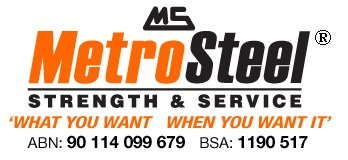Perforated metal is being used widely nowadays to part clad buildings and give a sleek contemporary aesthetic. Not only is it easy to work with and install, but it also offers many advantages. So let’s take a closer look.
Bespoke aesthetic
If you’re looking to stand a building out from the crowd then clever use of perforated metal can do exactly this. With limitless options on hole size, shape, geometric patterns, and finishes, it’s the perfect material to create a bespoke unique look. Besides adding visual interest to the outside of a building it also allows the occupants to see outside while maintaining a certain degree of privacy. Not only does it allow natural daylight through during the day but it also decreases the use of artificial light while also deflecting heat.
Durability
Perforated metal has a structural strength which is far superior to many other materials. Because of its high strength-to-weight ratio it can equalise or control pressure and withstand the harshest of weather conditions. Because the steel is perforated, there is less weight for the building’s frame to have to support.
Versatility
Because of its construction, perforated metal is easy to bend and shape to match your design and can be used both as a structural component within your building or as a lightweight decorative feature. The structural benefits give architects numerous options to explore. For example, it can be used as railing infills which add structure yet reduce mass; as sunscreens to filter and control the light; or to cover columns enhancing their asesthetics, plus many more.
Eco-friendly
Metal is the ultimate in material for ‘green’ design and construction and perforated metal doesn’t risk depletion since it can be recycled. It also promotes sustainability, consumes less energy in use, and opens itself up to innovation and creative design. The fact the material is perforated also means less metal is used which in turn means less weight and a lower fuel consumption when transporting it to the building site.
Energy-efficient
Since perforated metal balances light and ventilation, it allows architects to manage interior heat build up from the sun. Because it deflects the heat from the sun, it means that HVAC systems don’t have to work so hard to maintain a consistent inside temperature. Also, as a means of screening, it means that less indoor light is needed.
Designers, architects, contractors and engineers can all benefit from the many benefits that perforated metal offers. So why don’t you look at enhancing and exploring new options while enjoying numerous visually and environmental benefits. Talk to Metro Steel on 07 3204 1000 about your next project. We’ll be happy to help.
 Talk to an Expert (07) 3204 1000
Talk to an Expert (07) 3204 1000 Working Hours - Mon – Fri 7:00 AM – 4:00 PM
Working Hours - Mon – Fri 7:00 AM – 4:00 PM